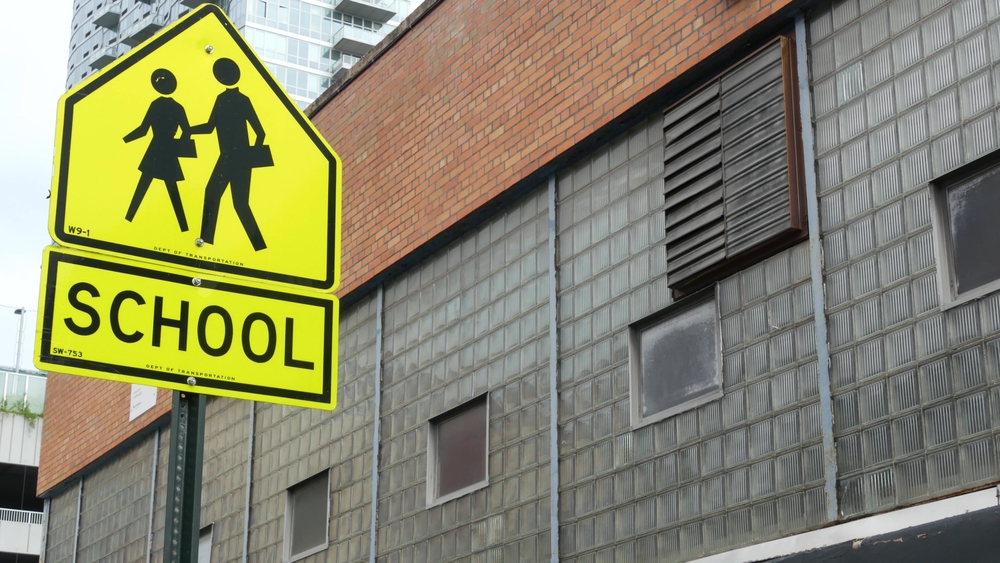Raise your hand if you were told to “sit still,” “follow the rules,” and “get a good job one day.” Chances are, you just flashed back to your school days—the pencil smell, the group projects, and that one teacher who said, “You can’t use a calculator forever.” American schools are great at teaching reading, math, and how to memorize state capitals, but they’re not so great at teaching financial independence or creative risk-taking. Instead, our education system seems laser-focused on preparing kids for one specific destination: the middle class.
From the structure of the school day to the lessons we emphasize (and the ones we don’t), schools quietly shape how students think about work, money, and success.
1. The Schedule Mimics a 9-to-5 Job
Think about the typical school day: you clock in at 8 a.m., take scheduled breaks, follow strict rules, and listen to a boss (er, teacher). It’s basically training for the corporate world. Kids grow up learning that productivity happens in specific time blocks, creativity has a bell schedule, and authority always gets the final say. It’s not exactly the mindset that breeds entrepreneurs, freelancers, or innovators. By the time students graduate, they’ve already internalized the rhythm of a 9-to-5 job—and anything outside that feels risky or wrong.
2. Grades Reward Compliance, Not Creativity
Let’s be honest: schools love order. The easiest way to get an A isn’t by challenging the system—it’s by following it perfectly. Kids who color inside the lines, turn in every worksheet, and memorize the “right” answers rise to the top. Meanwhile, the curious ones who ask too many questions or come up with unconventional ideas often get labeled as “distracted.” This trains students to play it safe rather than think big. By prioritizing neatness and obedience over creativity and experimentation, schools unintentionally discourage the same risk-taking that leads to financial and personal breakthroughs.
3. Career Advice Stays in the Comfort Zone
Ask a high school guidance counselor what you should do after graduation, and you’ll likely hear about college, stable careers, and “good benefits.” Rarely do schools highlight paths like entrepreneurship, trade skills, or creative freelancing—jobs that might not have a clear ladder but often lead to real independence.
The unspoken rule is simple: security over uncertainty. But the world doesn’t work that way anymore. In an economy built on innovation and flexibility, this middle-class mindset can limit kids before they’ve even begun exploring what’s possible.
4. Financial Literacy Is Practically Nonexistent
You’d think schools would teach kids how to manage money since it’s, you know, essential for adulthood. But aside from a short unit on balancing a checkbook (which no one under 40 even uses anymore), most students graduate with zero real-world financial skills. They can solve for X but not for “how do I get out of debt?”
This lack of financial literacy keeps people dependent on traditional jobs and steady paychecks instead of empowering them to build wealth. Schools teach how to earn money, but not how to make money work for you—and that’s a big difference.
5. Success Is Measured by Stability, Not Impact
From the moment we start taking standardized tests, success in school is defined by consistency and predictability. Do well, stay out of trouble, get a stable career—that’s the formula. Schools rarely talk about passion projects, legacy, or making a difference beyond a paycheck. The message is clear: it’s better to be safe and average than bold and exceptional. While that mindset might create reliable workers, it doesn’t cultivate visionaries who change the world—or even their own lives—in extraordinary ways.
6. Group Work Over Individual Thinking
Sure, teamwork is important. But the way schools handle group work often prioritizes harmony over leadership or independent thought. Students are taught to compromise, follow consensus, and avoid conflict—even when their ideas are better. That’s great for maintaining peace in the classroom but not for developing bold thinkers who can challenge the status quo. By constantly emphasizing cooperation over individuality, schools subtly teach kids to fit in rather than stand out.
7. The Hidden Fear of Failure
Failure in school is punished harshly bad grades, lost privileges, embarrassment. Yet in real life, failure is the single most important part of growth and success. Schools rarely frame mistakes as learning opportunities; instead, they encourage kids to avoid failure at all costs. Over time, that breeds risk-aversion and perfectionism—the hallmarks of middle-class comfort zones. When kids grow up terrified to fail, they’re also less likely to take the kind of bold chances that create financial freedom or innovation.
Breaking the Middle-Class Mindset
None of this means schools are “bad.” They’re doing exactly what they were designed to do—create dependable, productive citizens who fit neatly into society’s structure. The problem is that society has changed, but the classroom hasn’t caught up. The 21st-century world rewards adaptability, creativity, and financial intelligence far more than blind conformity. If we want our kids to think beyond the middle class, we have to start teaching them how to think, not just what to think.
What do you think—does our school system still prepare kids for the old world? Share your thoughts, experiences, or even school memories in the comments.
You May Also Like…
8 Nutrition Myths Still Taught in Medical Schools
10 Discipline Beliefs Still Used in U.S. Schools Despite Being Obsolete
9 School Lessons That Would Be Illegal in Other States Today
How the Middle Class Is Dwindling—And No One’s Sounding the Alarm
10 Habits of Poor People That The Middle Class Are Adopting To Survive


